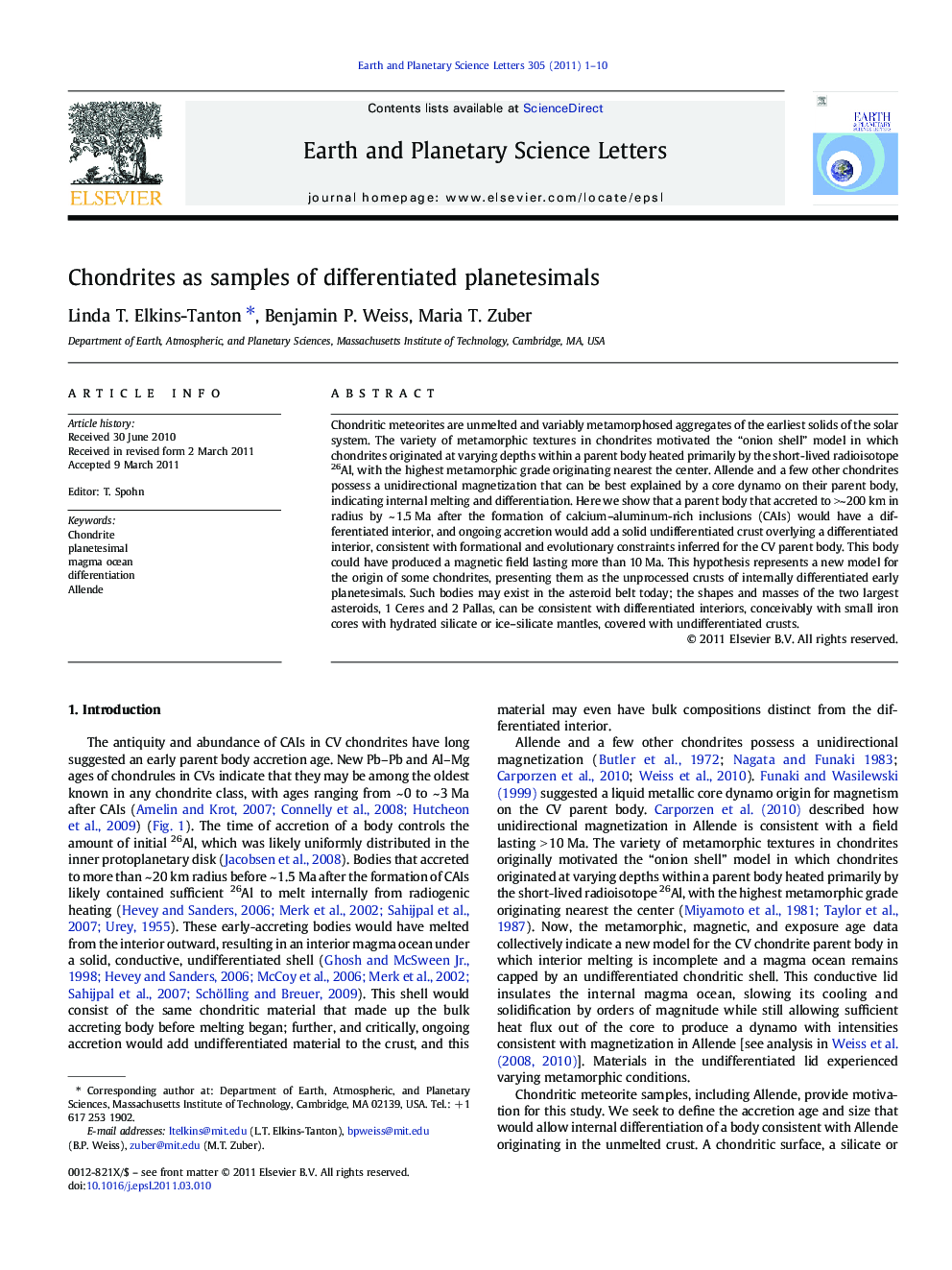| Article ID | Journal | Published Year | Pages | File Type |
|---|---|---|---|---|
| 4677946 | Earth and Planetary Science Letters | 2011 | 10 Pages |
Chondritic meteorites are unmelted and variably metamorphosed aggregates of the earliest solids of the solar system. The variety of metamorphic textures in chondrites motivated the “onion shell” model in which chondrites originated at varying depths within a parent body heated primarily by the short-lived radioisotope 26Al, with the highest metamorphic grade originating nearest the center. Allende and a few other chondrites possess a unidirectional magnetization that can be best explained by a core dynamo on their parent body, indicating internal melting and differentiation. Here we show that a parent body that accreted to >~200 km in radius by ~ 1.5 Ma after the formation of calcium–aluminum-rich inclusions (CAIs) would have a differentiated interior, and ongoing accretion would add a solid undifferentiated crust overlying a differentiated interior, consistent with formational and evolutionary constraints inferred for the CV parent body. This body could have produced a magnetic field lasting more than 10 Ma. This hypothesis represents a new model for the origin of some chondrites, presenting them as the unprocessed crusts of internally differentiated early planetesimals. Such bodies may exist in the asteroid belt today; the shapes and masses of the two largest asteroids, 1 Ceres and 2 Pallas, can be consistent with differentiated interiors, conceivably with small iron cores with hydrated silicate or ice–silicate mantles, covered with undifferentiated crusts.
Research Highlights► Allende likely originated in an undifferentiated crust on a differentiated body. ► Early-accreting planetesimals had sufficient heat flux to produce a core dynamo. ► Some asteroids may be internally differentiated bodies but retain primitive crusts. ► Ceres and Pallas have shapes and masses consistent with internal differentiation.
